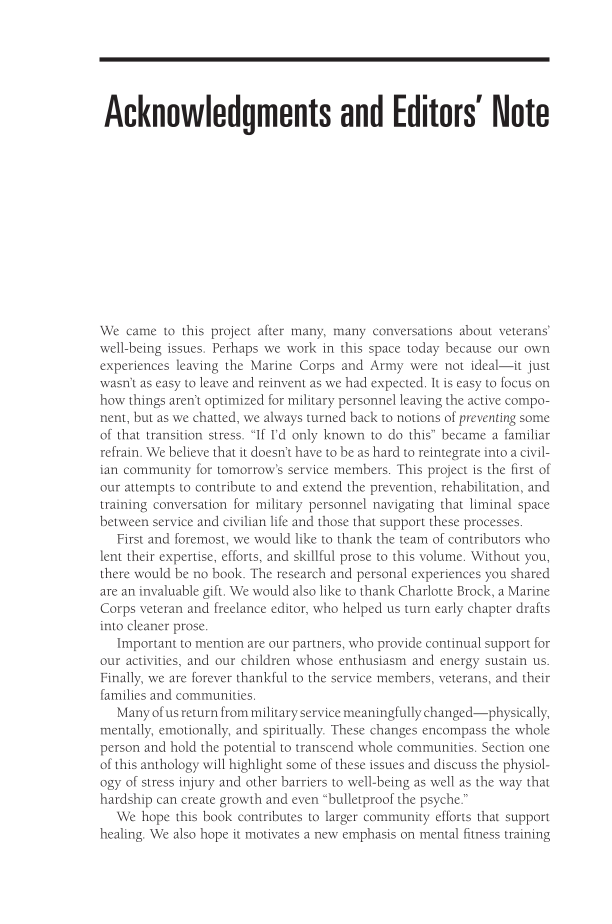We came to this project after many, many conversations about veterans’ well-being issues. Perhaps we work in this space today because our own experiences leaving the Marine Corps and Army were not ideal—it just wasn’t as easy to leave and reinvent as we had expected. It is easy to focus on how things aren’t optimized for military personnel leaving the active compo- nent, but as we chatted, we always turned back to notions of preventing some of that transition stress. “If I’d only known to do this” became a familiar refrain. We believe that it doesn’t have to be as hard to reintegrate into a civil- ian community for tomorrow’s service members. This project is the first of our attempts to contribute to and extend the prevention, rehabilitation, and training conversation for military personnel navigating that liminal space between service and civilian life and those that support these processes. First and foremost, we would like to thank the team of contributors who lent their expertise, efforts, and skillful prose to this volume. Without you, there would be no book. The research and personal experiences you shared are an invaluable gift. We would also like to thank Charlotte Brock, a Marine Corps veteran and freelance editor, who helped us turn early chapter drafts into cleaner prose. Important to mention are our partners, who provide continual support for our activities, and our children whose enthusiasm and energy sustain us. Finally, we are forever thankful to the service members, veterans, and their families and communities. Many of us return from military service meaningfully changed—physically, mentally, emotionally, and spiritually. These changes encompass the whole person and hold the potential to transcend whole communities. Section one of this anthology will highlight some of these issues and discuss the physiol- ogy of stress injury and other barriers to well-being as well as the way that hardship can create growth and even “bulletproof the psyche.” We hope this book contributes to larger community efforts that support healing. We also hope it motivates a new emphasis on mental fitness training Acknowledgments and Editors’ Note
Document Details My Account Print multiple pages
Print
You have printed 0 times in the last 24 hours.
Your print count will reset on at .
You may print 0 more time(s) before then.
You may print a maximum of 0 pages at a time.































































































































































































































































































